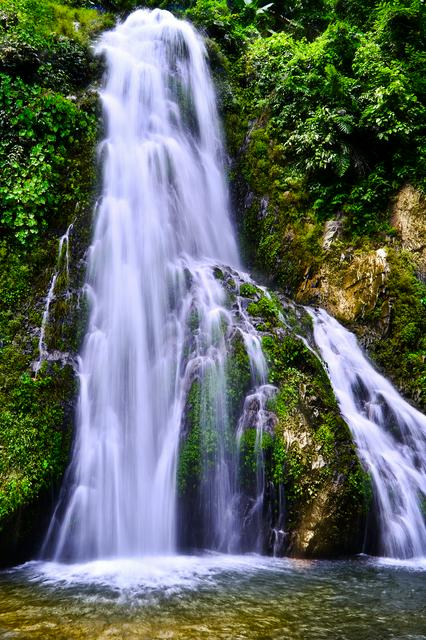North-Eastern India consists of seven small states that are surrounded by Bhutan, China and Myanmar, and almost cut off from the rest of India by Bangladesh.
Here are nine of the most notable cities.
- Agartala. — capital of Tripura
- Aizawl. — capital and largest city in Mizoram
- Dispur. — capital of Assam with more than two thousand years of history
- Imphal. — capital of Manipur
- Itanagar. — capital of Arunachal Pradesh
- Kohima. — capital of Nagaland
- Matabari. — located near Udaipur, Tripura this town is home to the Tripureswari Mandir
- Shillong. — capital of Meghalaya
- Tuensang. — a district and town in Nagaland with a great view of Mount Saramati
Agartala. — capital of [[Tripura]]
Aizawl. — capital and largest city in Mizoram
Dispur. — capital of [[Assam]] with more than two thousand years of history
Imphal. — capital of [[Manipur]]
Itanagar. — capital of [[Arunachal Pradesh]]
Kohima. — capital of [[Nagaland]]
Matabari. — located near Udaipur, Tripura this town is home to the Tripureswari Mandir
Shillong. — capital of [[Meghalaya]]
Tuensang. — a district and town in Nagaland with a great view of Mount Saramati
- Intangki National Park. (Ntangki National Park), Nagaland — a wildlife park located in the Perren district. Home to several endangered species as well as other mammals and birds. Among them are the golden langur, white-breasted kingfisher, python and sloth bear
- Kaziranga National Park., Assam — one of the oldest national parks in India with the largest habitat for Indian single-horned rhinos
- Namdapha National Park., Arunachal Pradesh — (rain forest area) third largest national park in India with a large diversity of mammals and birds and for being home to the northernmost rain forest in the world
- Nameri National Park., Assam — a national park located in the foothills of the Eastern Himalayas
- Nokrek National Park. (Nokrek Biosphere Reserve), Meghalaya — a small population of red pandas reside in this park. It is habitat for the Asian elephant, species of cats and primates. It is also an important area for birds. Rongbang Dare Water Fall and Nokrek Peak are located in this park with tall, thick forest
Intangki National Park. (Ntangki National Park), [[Nagaland]] — a wildlife park located in the Perren district. Home to several endangered species as well as other mammals and birds. Among them are the golden langur, white-breasted kingfisher, python and sloth bear
Kaziranga National Park., [[Assam]] — one of the oldest national parks in India with the largest habitat for Indian single-horned rhinos
Namdapha National Park., [[Arunachal Pradesh]] — (rain forest area) third largest national park in India with a large diversity of mammals and birds and for being home to the northernmost rain forest in the world
Nameri National Park., [[Assam]] — a national park located in the foothills of the Eastern Himalayas
Nokrek National Park. (Nokrek Biosphere Reserve), [[Meghalaya]] — a small population of red pandas reside in this park. It is habitat for the Asian elephant, species of cats and primates. It is also an important area for birds. Rongbang Dare Water Fall and Nokrek Peak are located in this park with tall, thick forest
With the possible exception of the state of Assam, which is famous worldwide for its tea, this is the least-known region of India. Most of these states are known for their hill tribes, who have often been proudly independent-minded and some of whom have fought long insurgencies against the central government, though peace has broken out in some of the affected states and political violence has died down. (See #Stay safe.)
This area of the country is different demographically from the rest of India, which is partly shown by the nature of its religious diversity. While the great majority of Tripurans are Hindus and most Assamese are Hindus or Muslims, Mizoram, Meghalaya and Nagaland are overwhelmingly Christian, Manipur is almost equally divided between Hindus and Christians, and Arunachal Pradesh has a very slight plurality of Christians, with Hindus in nearly equal numbers and the indigenous Donyi-Polo religion, which combines shamanism and Animism, close behind. There is also a Buddhist presence, especially in places like Tawang that are close to the borders of Tibet and Bhutan. Tibetan cultural influence extends far beyond the population of practicing Buddhists, for example by influencing local foods in some parts of the North East. Given the unique cultural and social landscape, it helps a visitor to avoid patronizing questions about race, citizenry, or even food. Remember, these are seven diverse states with highly diverse legacies.
Geographically, again, Assam is a state apart, as it is centred around the valley of the broad Brahmaputra, whereas all the other states in this region are at least partly hilly, with some featuring tall snow-capped mountains.
-NPJKU.medium.jpg)
This region of India has about 220 languages from multiple language families. English and Hindi are not universally understood, and below is a list of the official languages of each state which will help your trip planning to some extent:
- Arunachal Pradesh - Hindi, English
- Assam - Assamese, Bengali (in the Barak Valley), Bodo (in Bodoland)
- Manipur - Meiteilon, English
- Meghalaya - Khasi, Garo, English
- Mizoram - Mizo, English
- Nagaland - English
- Sikkim - Nepali, English
- Tripura - Bengali, Kokborok

- Greener Pastures, +91 9435 747471. An eco-tourism company that promotes travel, conservation and sustainability in Northeast India. They provide tours that deal with tribal cultural exchange, wildlife viewing, extreme adventure sports, river cruises, history learning and tea stays.
- Kaziranga National Park. Famous for its one-horned rhino found nowhere else in the world. Elephant rides in the park make for a thrilling experience. Has accommodation cottages and restaurants.
Kaziranga National Park. Famous for its one-horned rhino found nowhere else in the world. Elephant rides in the park make for a thrilling experience. Has accommodation cottages and restaurants.
Greener Pastures, +91 9435 747471. An eco-tourism company that promotes travel, conservation and sustainability in Northeast India. They provide tours that deal with tribal cultural exchange, wildlife viewing, extreme adventure sports, river cruises, history learning and tea stays.
North East India is famous for its delicious and ethnic delicacies. The cuisine includes world famous vegetarian and non vegetarian dishes. North East has earned accolades for the various dishes prepared from local herbs and spices. Apart from local dishes, it is also equipped with restaurants and hotels serving conventional Indian foods (both North Indian and South Indian). So eating is no problem for tourists.
If you are over the age of 25, you can drink alcohol in India. In North Eastern India, there are many refreshing alcoholic beverages that you can drink. Look for aphung (a rice-beer) in Arunachal Pradesh and Assam, zutho (a type of wine) in Mizoram, or the mildly intoxicating tongba in Sikkim. You can find many of these in local markets.

NE India is completely connected with the rest of the world with excellent communication facilities with all the major telecommunication companies like Reliance, Vodafone, Aircel and BSNL.
The North East is the most culturally distinct from the rest of India, and many separatist movements exist here; however, there have been no occasions where tourists have been attacked or have faced any disturbances. As of March 2017, the region has been declared safe for tourism.
